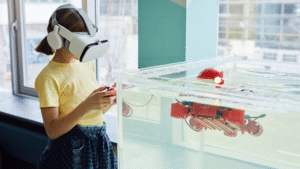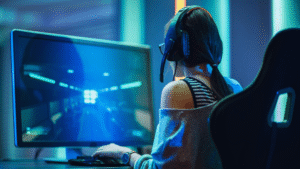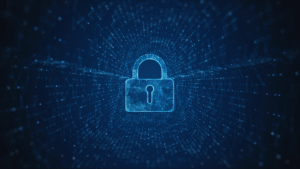Improving aim in FPS games is crucial for achieving higher performance and enhancing the overall gaming experience. Consistent practice combined with effective aim training techniques can significantly elevate one’s shooting accuracy and reaction times. Players often find that dedicating time to specific drills, utilising tools and software designed for aiming, can yield impressive results.
Aiming in FPS games is not solely about instinct; it involves understanding mechanics and cultivating muscle memory. Many gamers benefit from setting up a tailored training routine that includes challenges and exercises targeting precision, tracking, and flicking. By incorporating these methods into their gaming regimen, they can develop skills that translate directly into competitive play.
The journey to improved aim requires patience and dedication, but the right strategies can make a substantial difference. By exploring various resources and committing to regular practice, players can transform their aiming capabilities and enjoy a more rewarding experience in their favourite titles.
Mastering Fundamentals of Aim in FPS Games
To enhance aiming skills in FPS games, players must focus on several critical aspects. Key factors include sensitivity settings, the choice of mouse and mouse pad, muscle memory development, and ergonomic positioning. Each element plays a vital role in achieving a precise aim and improving overall performance.
Understanding Sensitivity Settings
Mouse sensitivity determines how far the cursor moves in relation to mouse movements. Lower sensitivity allows for finer control, essential for accurate aiming, particularly over long distances. A common recommendation is to aim for a sensitivity setting that enables players to make precise adjustments without overshooting targets.
To find the ideal sensitivity, players could start at a lower setting and gradually increase it. This gradual progression helps to identify a balance where fast movements remain controllable. A sensitivity of between 400 to 800 DPI (dots per inch) is often preferred, combined with a lower in-game sensitivity.
Importance of Mouse Pads and Gaming Mice
A quality mouse pad enhances tracking and control, promoting consistency in aim. A smooth, large surface allows for seamless movements, reducing friction that can disrupt aim. Players should consider materials such as cloth for comfort or hard surfaces for speed, depending on their play style.
Gaming mice are designed with precision in mind, offering features like adjustable DPI settings and programmable buttons. Choosing a mouse that fits comfortably in the hand is critical. Size and weight impact handling; lighter mice may enhance speed, while heavier options can improve stability during aiming.
Developing Muscle Memory
Muscle memory is crucial for developing instinctive aiming. Through repetitive practice, movements become automatic, allowing players to react swiftly in dynamic situations. Regular drills, such as target tracking and flick shots, can enhance this skill.
Players can practice in modes designed for aim training, focusing specifically on accuracy. Gradually increasing difficulty, such as moving targets or timed challenges, can further strengthen muscle memory. Consistent practice sessions lead to improved precision and reaction time.
Role of Field of View and Ergonomics
Field of view (FOV) affects a player’s awareness and perception of the game. A wider FOV can provide a broader perspective, allowing players to track multiple opponents more efficiently. Adjusting the FOV settings to find a comfortable point can help improve aim.
Ergonomics also plays a vital role in aiming performance. Proper posture and comfortable seating help reduce fatigue during long gaming sessions. Players should ensure their setup supports natural wrist and arm positions to maintain endurance while aiming. Adjusting the height of the chair and monitor can significantly affect overall comfort and aim control.
Techniques for Effective Aim Training
Improving aim requires strategic training across various skills. Practising with dedicated tools and techniques enhances tracking, target switching, and flick shots for better performance in FPS games.
Utilising Aim Trainers and Practice Tools
Aim trainers are specialised software designed to improve shooting accuracy. Popular platforms include Kovaak’s FPS Aim Trainer and Aim Lab, both offering various drills tailored to different aiming styles and mechanics.
Players should focus on specific exercises that target weaknesses, such as reaction time or precision. Regularly using aim trainers helps establish muscle memory, which is crucial for effective gameplay.
Scheduling daily practice sessions of 20-30 minutes maximises improvement. Consistency coupled with these tools enables players to refine their skills in a controlled environment, enhancing overall performance during actual gameplay.
Tracking and Target Switching Skills
Tracking requires smooth and consistent mouse movements to follow moving targets accurately. Players can develop this skill by practising in-game scenarios with dynamic elements, such as moving bots or target dummies.
To improve target switching, players should engage in drills that encourage fast transitions between targets. This can be practised by setting up multiple targets and challenging oneself to hit them in quick succession.
Incorporating progressive difficulty levels, such as increasing the speed of moving targets or reducing target size, can significantly advance tracking capabilities. Regular practice in these areas leads to higher accuracy and quicker reflexes.
Perfecting Flick Shots and Flicking
Flick shots involve quickly moving the crosshair to aim at targets and require precision and speed. To perfect this technique, players should start with stationary targets and gradually progress to moving targets.
Practising flicking can be enhanced by using aim trainers that focus on this specific skill. Many tools offer customised training scenarios, allowing players to adjust sensitivity and field of view settings for tailored feedback.
In-game scenarios also help solidify flicking skills. Setting up custom matches or using training maps allows players to simulate real combat situations, which fosters better reflexes and decision-making under pressure.
Advanced Tips for Consistent Aim Improvement
Achieving a higher level of aim consistency requires a mix of technical adjustments and refined practices. By focusing on dead zones, response times, and sharpening precision, players can make significant strides in their performance.
Adjusting for Dead Zones and Response Times
Dead zones refer to the unresponsive areas within a controller’s joystick input. Reducing these zones can allow for more immediate reactions in-game. Players should access their settings and look for options to minimise the dead zone percentage, typically recommended between 0.05 to 0.10 for FPS games.
Response times are also critical. A player’s settings should be adjusted to ensure that they respond effectively to directional inputs. A lower response time can lead to quicker movements, essential in battle royale games like Apex Legends. Players may benefit from enabling options such as “raw input” in their settings. This helps achieve a direct correlation between movement and aim.
Refining Reaction Time and Movements
Improving reaction time involves regular practice and specific training exercises. Players can incorporate drills that focus purely on reflex actions, such as tracking moving targets at different speeds. Utilising aim training software like Kovaak’s or Aim Lab can also enhance quick responses.
Furthermore, correct mouse and controller movements are fundamental. Maintaining a steady grip can create smoother movements, aiding in precision. Regularly recalibrating these settings is essential for optimal performance, especially in fast-paced gameplay scenarios.
Enhancing Precision in Competitive Modes
In competitive modes, precision is paramount. Players should explore the sensitivity settings to find what feels most comfortable. Many endorse a lower sensitivity for greater accuracy, often opting for values around 400 to 800 DPI (dots per inch).
Practising with different aiming techniques, such as flick shots and tracking, is vital. Players should consider setting specific targets for improvement, like hitting a certain percentage of headshots. Engaging in real matches or aim training versus AI can help solidify these skills in high-stakes scenarios, resulting in a more consistent aim.
Optimising Gear and In-Game Settings
Selecting the right gear and configuring settings can significantly enhance performance in FPS games. Focus on the gaming mouse and accessories, personal settings, and the influence of RGB lighting and analogue sticks to optimise the gaming experience.
Choosing the Right Gaming Mouse and Accessories
A high-quality gaming mouse is essential for improving aim. Look for options with adjustable DPI settings, which allow for sensitivity adjustments. A mouse with a comfortable grip and ergonomic design reduces fatigue during long sessions.
Important features to consider include:
- Polling Rate: A 1000 Hz polling rate ensures the mouse sends updates to the computer every millisecond.
- Weight Adjustment: Mice that allow weight modifications can help find the right balance for control.
- Additional Buttons: Extra programmable buttons facilitate quick access to commands.
Accessories like mouse pads can enhance precision. A large, smooth mouse pad allows for wider movements, especially for low-sensitivity players.
Configuring Settings for Personal Preference
Personal preferences vary widely among gamers, so customising in-game settings is important for optimal performance. Adjusting sensitivity settings can influence aim precision; a balance between speed and control is key.
Players should consider:
- DPI Settings: Most players find a DPI range between 400 and 1600 optimal, but personal preference and game style matter.
- In-Game Sensitivity: Adjusting this setting can provide finer control; a lower sensitivity option is typically better for aiming.
- Field of View (FOV): A higher FOV can improve awareness but may distort aim; find a comfortable setting.
Regularly tweaking in-game settings will help players discover their ideal configurations for enhanced performance.
The Impact of RGB Lighting and Analogue Sticks
While often seen as a cosmetic feature, RGB lighting can enhance gaming immersion. Strategically used RGB can act as a visual cue for in-game actions, although it is not directly related to aim improvement.
Analogue sticks play an important role in aiming. For console gamers, the quality of the analogue sticks affects precision:
- Stick Tension: Sticks with adjustable tension can offer more resistance for better control.
- Grip Texture: Sticks with a textured grip can improve handling, reducing slippage during intense gameplay.
Investing in high-quality controllers can drastically impact performance, making it easier to aim accurately.




